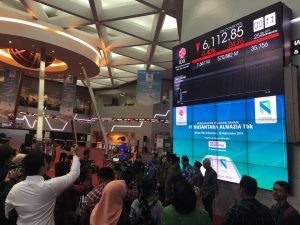Getting Started with Bank Forex Trading: A Beginner’s Guide
Forex trading, also known as foreign exchange trading, is the process of buying and selling currencies on the foreign exchange market. It is the largest and most liquid financial market in the world, with an average daily trading volume of over $6 trillion. Many individuals and institutions participate in forex trading, including banks.
Bank forex trading involves banks trading currencies on behalf of their clients, which can include individuals, corporations, and other financial institutions. Banks play a crucial role in the forex market, providing liquidity and facilitating transactions for their clients.
If you are a beginner interested in getting started with bank forex trading, this guide will provide you with the essential information you need to know.
Understanding the Forex Market
Before diving into bank forex trading, it is important to have a basic understanding of the forex market. The forex market operates 24 hours a day, five days a week, across different time zones. It is a decentralized market, meaning that there is no central exchange where all transactions take place.
Currencies are traded in pairs, with the most commonly traded pairs being the EUR/USD (Euro/US Dollar), GBP/USD (British Pound/US Dollar), and USD/JPY (US Dollar/Japanese Yen). Forex prices are determined by supply and demand factors, such as economic indicators, geopolitical events, and market sentiment.
Choosing a Bank Forex Trading Platform
To engage in bank forex trading, you will need to choose a bank that offers forex trading services. Not all banks provide this service, so it is important to do your research and find a reputable bank with a solid track record in forex trading.
When selecting a bank, consider factors such as the bank’s reputation, trading platform, customer support, and fees. A good trading platform should be user-friendly, provide real-time market data, and offer advanced charting tools and technical analysis indicators.
Opening a Bank Forex Trading Account
Once you have chosen a bank, you will need to open a bank forex trading account. This process typically involves completing an application form, providing identification documents, and funding your account with an initial deposit.
Before funding your account, it is important to determine how much capital you are willing to risk. Forex trading can be highly volatile, and it is recommended to start with a smaller amount until you gain experience and confidence in your trading abilities.
Learning the Basics of Forex Trading
Before diving into bank forex trading, it is essential to learn the basics of forex trading. Familiarize yourself with key concepts such as currency pairs, pips (the smallest unit of price movement), leverage (the ability to control larger positions with a smaller amount of capital), and margin (the collateral required to open and maintain positions).
Educational resources such as online courses, trading books, and webinars can be valuable tools for learning the fundamentals of forex trading. Additionally, many banks offer educational materials and resources specifically tailored for their forex trading clients.
Developing a Forex Trading Strategy
A successful bank forex trader relies on a well-defined trading strategy. A trading strategy is a set of rules and criteria that guide your trading decisions. It should include entry and exit points, risk management techniques, and guidelines for managing trades.
There are various trading strategies to choose from, including trend following, breakout trading, and range trading. It is important to choose a strategy that aligns with your trading style, risk tolerance, and time commitment.
Practicing with a Demo Account
Before risking real money in bank forex trading, it is recommended to practice trading with a demo account. A demo account allows you to trade with virtual money in a simulated trading environment. It is a valuable tool for testing your trading strategy, familiarizing yourself with the trading platform, and gaining experience without the risk of financial loss.
Monitoring Market Trends and News
To be successful in bank forex trading, it is crucial to stay informed about market trends and news. Economic indicators, central bank announcements, geopolitical events, and other factors can significantly impact currency prices. Therefore, regularly monitoring market news and staying up to date with economic calendars can help you make informed trading decisions.
Managing Risk
Risk management is a vital aspect of bank forex trading. It involves implementing strategies to limit potential losses and protect your trading capital. Risk management techniques include setting stop-loss orders (an order to close a position at a predetermined price level), using proper position sizing (determining the appropriate amount to invest in each trade), and diversifying your trading portfolio.
Final Thoughts
Bank forex trading is a complex and dynamic market that offers immense opportunities for profit. However, it also involves risks and requires a solid understanding of the market, trading strategies, and risk management techniques. By following the steps outlined in this beginner’s guide, you can lay the foundation for a successful journey into the world of bank forex trading. Remember to continuously educate yourself, practice with a demo account, and remain disciplined in your trading approach.






